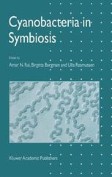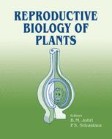Search
Search Results
-

-
Investigating the Production of Secondary Compounds in Cultured Lichen Mycobionts
Lichens produce an amazing diversity of compounds, which can be divided into two groups: intracellularly produced primary metabolites, and secondary...
-

-

-
Structural Diversity of Lichen Metabolites and Their Potential Use
Lichens are symbiotic organisms composed of a fungal partner, the mycobiont, usually in association with one or more photosynthetic partners, the...
-
Group I intron lateral transfer between red and brown algal ribosomal RNA
How group I introns originate in nuclear ribosomal (r)RNA genes is an important question in evolutionary biology. Central to this issue is the...
-

-
Reproductive Biology of Lichens
Lichens are among the most widely distributed eukaryotic organisms in the world (Galun 1988) and already about 14000 lichen species are known. Since...
-
Fungal Molecular Evolution: Gene Trees and Geologic Time
Fungal phylogenetics has always been based on characters, but technological and intellectual advances are introducing new kinds of characters and new...
-

-

-
The Symbiotic Phenotype of Lichen-Forming Ascomycetes
Lichens are the symbiotic phenotype of lichen-forming fungi, a polyphyletic, taxonomically heterogenous assembly of nutritional specialists which...
-
Basidiolichens
Originally, basidiolichens were considered to be exclusively tropical lichens, best represented by the genera Cora and Dictyonema. In his monograph...
-
Variability in the rbcL Introns of Caulerpalean Algae (Chlorophyta, Ulvophyceae)
gene have been reported to date. Four new cases from Caulerpales, Ulvophyceae are described here. In the genus Caulerpa , the presence of an intron...
-
Ascomycota
The fungi that constitute the Ascomycota undergo meiosis after the formation of a short-lived zygote and produce meiospores by free-cell formation...
-
The cyanobacterial origin and vertical transmission of the plastid tRNALeu group-I intron
We have surveyed the distribution and reconstructed the phylogeny of the group-I intron that is positioned in the anticodon loop of the tRNA Leu gene...
-
An exceptional group-I intron-like insertion in the SSU rDNA of lichen mycobionts
An exceptional group-I intron-like insertion at position 940 of the nuclear small subunit rDNA is found in lichen mycobionts of the families...
-
Metabolic Interactions at the Mycobiont-Photobiont Interface in Lichens
Lichen-forming fungi are, like plant pathogens or mycorrhizal fungi, a polyphyletic, taxonomically heterogeneous group of nutritional specialists...
-
Ontological Fundamentals
Metaphysics (or ontology or philosophical cosmology) is a traditional branch of philosophy and as such it need not be justified in the eyes of the...
-
Structural and Functional Aspects of Mycobiont - Photobiont Relationships in Lichens Compared with Mycorrhizae and Plant Pathogenic Interactions
Lichen-forming fungi are, like plant pathogens or mycorrhizal fungi, a taxonomically heterogeneous, polyphyletic group of nutritional specialists...
